 Space Exploration
Space Exploration
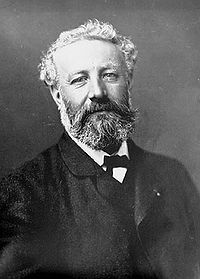 Humans dreamt of flying through space long before space travel was ever possible. In 1865, the French writer Jules Verne wrote his novel From the Earth to the Moon. More than a hundred years later man reached the moon.
Humans dreamt of flying through space long before space travel was ever possible. In 1865, the French writer Jules Verne wrote his novel From the Earth to the Moon. More than a hundred years later man reached the moon.
The first objects or vehicles were launched in the late 1950s. By that time, the United States and the Soviet Union competed for the lead in the “Space Race”.
Below listed are some inventions, events, and people who have marked and influenced the history of space exploration, and have made it possible for us to know many details about the Universe.
ARTIFICIAL SATELLITES
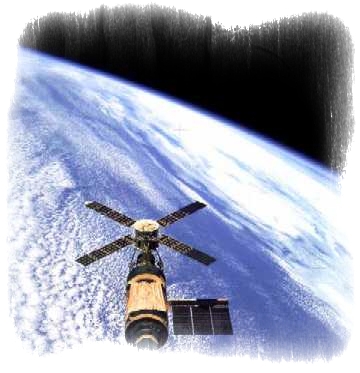 Artificial satellites are unmanned (without humans on board) space objects orbiting the Earth. They vary in size and shape depending on the purpose for which they were built.
Artificial satellites are unmanned (without humans on board) space objects orbiting the Earth. They vary in size and shape depending on the purpose for which they were built.
They use radio equipment to transmit information to the Earth and indicate their location in space. Different satellites are currently used for different purposes, including the following:
- Astronomical satellites are used to obtain precise data about the Sun, other stars, the Earth, and space itself.
- Weather satellites send data about temperature and formation of clouds.
- Communication satellites are used in telephony, as well as to transmit digital data and television images.
- Earth resources satellites are used to gather data for constructing images that provide information on land features, amount of water and ice in the oceans, pollution in coastal waters, and crop insect pests.
- Military satellites are used for surveillance or spying purposes such as the detection of troop movements or missile launch tests.
- Navigation satellites are used to determine the location of ships and submarines in the ocean.
- Global Positioning System (GPS) provides an object’s location, speed, and time 24 hours a day anywhere in the world. Modern automobiles are equipped with this system which can be quite helpful when determining the best path to follow when traveling.
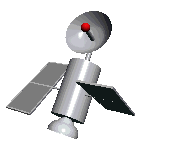
SPACE PROBES
Space probes are robotic artifacts launched at specific targets in space with the purpose of exploring them. Space shuttle or rockets are used to set the path of probes.
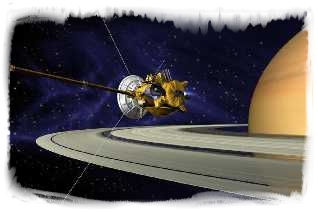
We have currently obtained information about the eight planets of the Solar System thanks to different probes.
MANNED SPACE TRAVEL
One year after the success of small satellites during 1957 and 1958, the Soviet Union and the United States started developing programs to send human beings to space. Both countries used animals -dogs and chimpanzees- to experiment the effects of the lack of gravity on living beings.
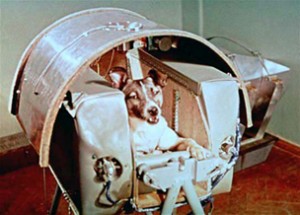 The first living being in space was a dog named Laika, which traveled on Sputnik 2, the second Soviet artificial satellite launched on November 3rd, 1957. Laika did well during launch, but died when her oxygen ran out. This satellite was destroyed after reentering the Earth’s atmosphere after 162 days of flight.
The first living being in space was a dog named Laika, which traveled on Sputnik 2, the second Soviet artificial satellite launched on November 3rd, 1957. Laika did well during launch, but died when her oxygen ran out. This satellite was destroyed after reentering the Earth’s atmosphere after 162 days of flight.
The Soviet Union was the first to launch a human into space. His name was Yuri A. Gagarin, and he completed an orbit around the Earth aboard the Vostok 1 spacecraft on April 12th, 1961. The spaceflight lasted one hour and forty-eight minutes and landed safely in Siberia.
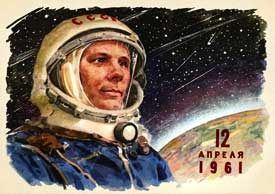
During the next two years, five new flights in the Vostok program followed. The Vostok 6, which carried Valentina Tereshkova, the first female astronaut, was launched on June 16th, 1963. This spacecraft completed forty-eight orbits around the Earth.
In 1969, mankind’s dream of reaching the moon was fulfilled. The Apollo 11 launched on July 16th, piloted by astronauts Edwin E. Aldrin and Neil Armstrong, landed on the moon’s surface on July 20th. .
The third astronaut, Michael Collins, remained in the Columbia command module. Hours later, Armstrong, in his spacesuit, descended from the ladder and stepped on the moon. Aldrin joined him and both astronauts walked on the moon surface for over two hours. They collected lunar samples, took photographs, and set up an artifact to detect and measure solar wind, a laser reflector, and a seismometer. Millions of viewers followed the live satellite broadcast of the event.
The Apollo 11 returned to Earth safely and splashed down in the Pacific Ocean, near Hawaii, where the crew and craft were picked up on July 24th.
SPACE STATIONS
The Soviets’ Salyut 1 and the United States’ Skylab were the first space stations, which were designed to remain for long periods in the Earth’s orbit while astronauts traveled to and from it in other vehicles. This allowed conducting several experiments and astronomical observations.
The construction of the International Space Station –ISS– began in November 1998. It is five times larger than the Russian station Mir and consists of over 100 elements.

This is the most ambitious attempt to create a structure where human beings can live outside the Earth’s atmosphere.
Manned spacecraft must meet complex requirements in order to supply the needs of the human passengers. These vehicles are designed to provide air, water, and food for the astronauts, as well as navigation and guidance equipment, seating and sleeping accommodations, and communication equipment so the crew can receive and send information. The heat shield that protects the vehicle as it reenters the atmosphere is a distinctive feature of manned spacecraft.
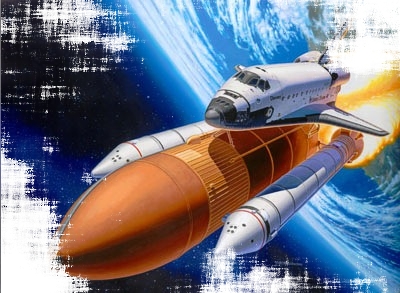
The space shuttle is a manned multi-use space plane designed to take off and orbit with seven crew members and passengers.
Each space shuttle has an estimated useful life of 100 missions. As it returns from space, it lands on a long runway using maneuvers. Inside its cargo hold, it can carry space probes or satellites weighing up to 3,000 Kg.

 Links
Links